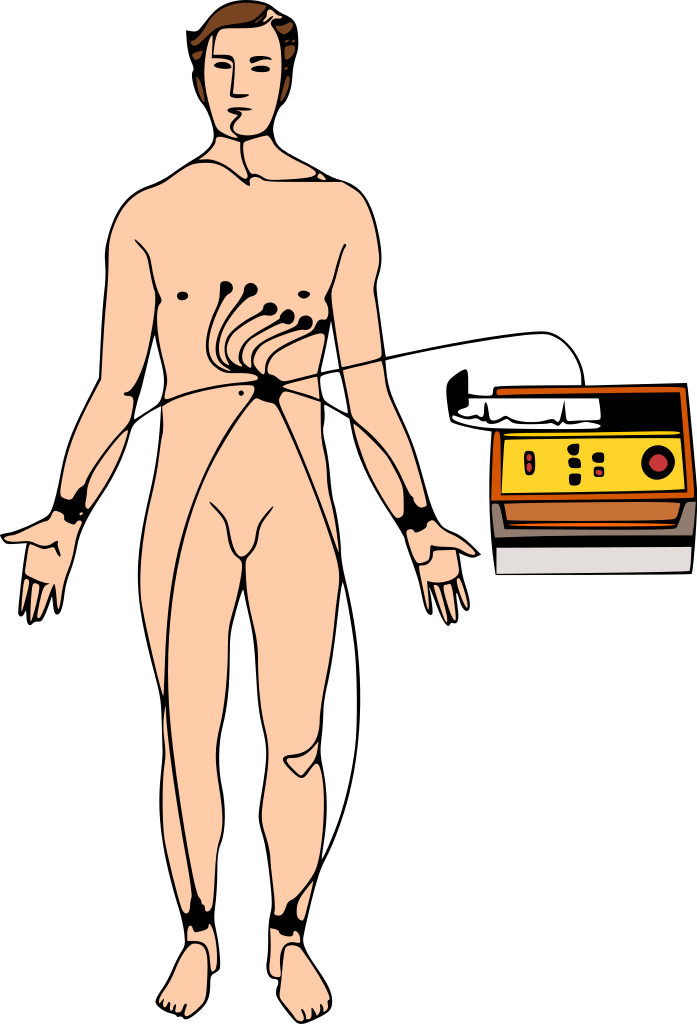 Today we had our blood pressure and EKG lab in physiology. I volunteered to be our first guinea pig and got the below 12-lead EKG for my trouble! Part of what's confusing about these is that you only use 10 physical leads to find the 12 signals - also called leads. Whereas six of the signal "leads" are straightforward and relate directly to physical leads (V1-V6), the other six (I, II, III, aVL, aVR, and aVF) are calculated from the remaining 4 physical leads. Simple! Also note that the genius who came up with this system used the numbers 1-3 and the roman numerals I-III in the same identifying system.
Today we had our blood pressure and EKG lab in physiology. I volunteered to be our first guinea pig and got the below 12-lead EKG for my trouble! Part of what's confusing about these is that you only use 10 physical leads to find the 12 signals - also called leads. Whereas six of the signal "leads" are straightforward and relate directly to physical leads (V1-V6), the other six (I, II, III, aVL, aVR, and aVF) are calculated from the remaining 4 physical leads. Simple! Also note that the genius who came up with this system used the numbers 1-3 and the roman numerals I-III in the same identifying system.
My EKG showed that my heart's mean electrical axis (MEA) is at 88° (a bit right of normal, but not pathological) and that my PR interval is a little long which is not normal, but again not pathological.
TIL: On average, women have less hypertension and subsequently less heart attacks than men until the onset of menopause, at which point the incidence increases to match that of men of the same age. This effect is due to the presence of estrogen (a vasodilator) in younger women. When estrogen levels decrease during menopause, its blood pressure reducing effects decrease as well.
Crucified people don't die from hunger, thirst, or even blood loss; they actually die of low blood pressure. The extended vertical position of the body eventually causes blood to pool in the legs, resulting in postural hypotension (low blood pressure from standing up) and eventually syncope (loss of consciousness) due to cerebral hypoxia (lack of oxygen in the brain).
Crucified people don't die from hunger, thirst, or even blood loss; they actually die of low blood pressure. The extended vertical position of the body eventually causes blood to pool in the legs, resulting in postural hypotension (low blood pressure from standing up) and eventually syncope (loss of consciousness) due to cerebral hypoxia (lack of oxygen in the brain).
70% of the circulating blood volume is contained in veins. About 5-10% is in arteries and another 5% in capillaries. Where the remaining 15-20% is? No idea. In the heart itself maybe? I think someone is supposed to tell us this in a couple days... I'll keep you posted!


No comments:
Post a Comment